#Gurkha Family Member
Explore tagged Tumblr posts
Text
The hovercar gently slides down the street of Coen City. In the seat next to Archaea, a Gurkha sits, feet up and laser rifle in their lap. In the back seat, their jump pack sits next to the heavy box of paper that makes up Archaea’s task. The papers are flyers, advertising recruitment for the civilian castes of Clan Blood Spirit. They promise sufficient food, housing, and offworld relocation. Archaea doesn't think that many people will take up the offer, but the actions of the militia during the battle probably soured enough people, and there’s always people who want to get offworld.
Its only been a day, but already a few people are trickling back from the evacuation shelters, and many never left. Amidst fallen mechs and ruined buildings, life returns to Coen.
A group of people in civilian clothes mingle outside a half ruined building, a crate of SLDF MREs open beside them. Archaea pulls the hovercar to a stop, grabs a handful of papers, and gets out. Putting on a smile, she steps forward to the group.
“Hi, my name is Archaea, I've been sent to make you aware of an opportunity.”
A couple people step forward.
One grimaces at the daggerstar on her Blood Spirit patch, then at the armed soldier in the passenger seat. “What kind of opportunity.” the group mumbles among themselves.
“Ah,Well…” She offers a flier which the person reads over. “Its all on there, but basically, Clan Blood Spirit is at… extremely low numbers and is rebuilding from Inner Sphere groups. By extremely low, I mean I am one of of three members and I was recruited from here.”
The person looks up at that. “Wait, you're a local?”
“Aff, grew up in a smaller town a bit west. Went to college here, joined the military, and got recruited after being shot down. Currently I'm an apprentice mechtech seconded to the Blackwatch. Though we're looking for any job skills, not just mechtechs and such.”
Someone else steps forward.
“It says relocation is required, what does that mean?”
“Well, we’re going to Terra after this so anyone who joins from here will probably stay there. Though if you're a mechtech or a medic you'll probably travel to combat deployments.”
Someone else speaks up. “Can we bring our families?”
“Aff, if you have family, you may bring them.”
“Can we travel?”
“What does it pay?”
“Can we leave?”
Archaea steps back, and raises her arms. “P-please, one question at a time please!” Archaea takes a deep breath. “O-okay… so, we don't really have much logistics sorted, but if you’re a merchant, you’d probably travel some, there would be opportunities to travel between worlds we hold probably. Uh, no pay, but everything is provided and there’ll be a commodity allowance depending on supply availability, possibly provided in local currency. Well, you can leave just as much as if you were a citizen of any spheroid nation, which is to say uh… no…”
The group of people grumbles and disperses. Except for two. One, the person who asked about family stands, clenching the paper.
“I- the militia killed my wife… I need to get offworld, find somewhere safe for my kids.” He nods to himself, then turns back to the group of people.
The other one looks at Archaea.
“I just want to get offworld. I’m a historian, I don't know how that can help but I'll do anything I can.”
Archaea nods. “We are looking into setting up some temporary housing near the city, and have a bus set up to take people there from the central station.”
“Ok, I'll spread the word.”
Archaea nods and gets back in the car, driving off to find more survivors.
3 notes
·
View notes
Text

9 July 2019 | Prince Charles, Prince of Wales poses for a photograph with senior commanders and family members during a visit to the 1st Battalion, The Royal Gurkha Rifles, who are celebrating the 25th anniversary of their formation, at Sir John Moore Barracks, in Shorncliffe, Folkestone. (c) Gareth Fuller - WPA Pool/Getty Images
1 note
·
View note
Photo
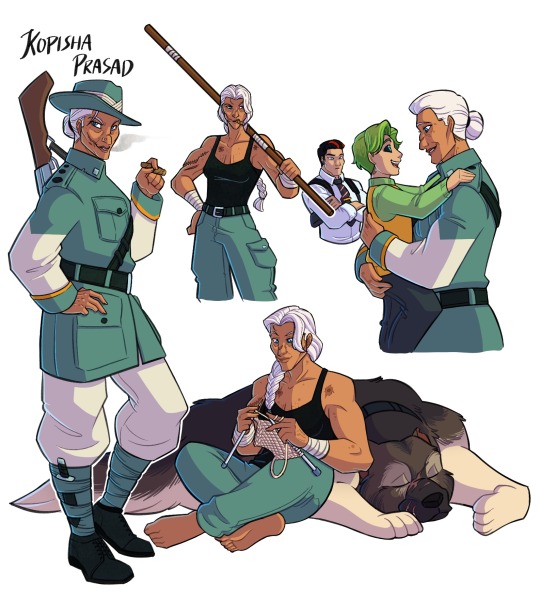
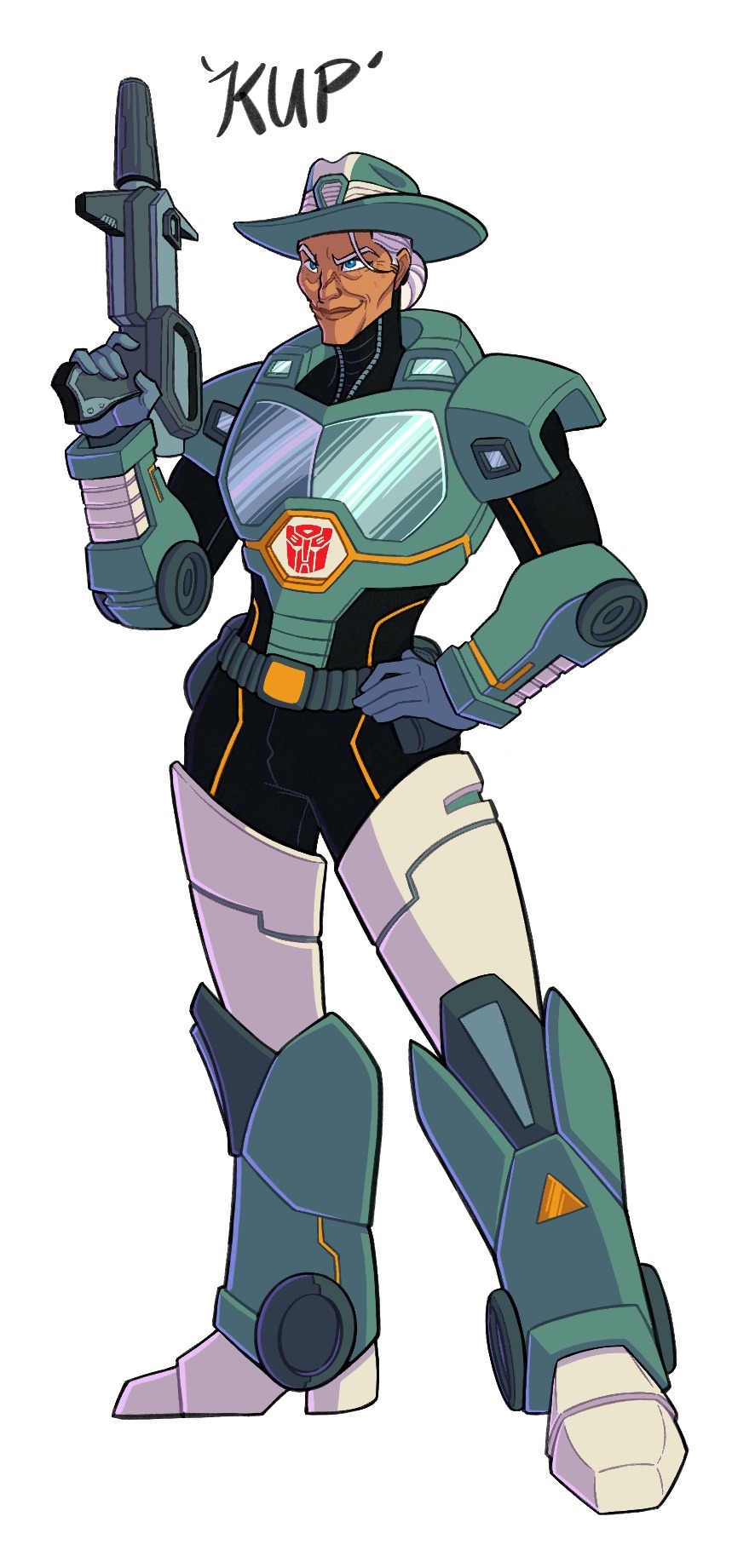
Combat Granny Kup’s all done up and ready to raise hell once she’s done knitting this scarf, give her a second, children these days are so impatient. Young!Springer was definitely a sweet surprise for her, despite their ‘unique’ background, especially after her time helping Senator Shockwave save Outlier children. They become a literal bigger surprise with how fast their grow in her care.
More of her story below!
Kopisha ‘Kop’ Prasad was born to parents Arjun Prasad and Gauri Chaudhary in the town of Lukla at the foot of Mt. Everest in 1920, the year Quintessons came into contact with Earth.
Humanity’s disastrous loss to and ongoing subjugation by the Quintesson colonizers by 1925 pushed many survivors of the First Quintesson War from obliterated major cities into isolated towns and villages where Quintessons would have difficulty launching a sustained assault; Lukla’s subarctic climate, for nine months of the year, provide a measure of protection for those who took refuge there and eventually turned the area into a fort.
As such, Kopisha grew up in a tight-knit community focused on mutual survival and joined the scouting division when she was eighteen, gathering intel for the Gurkha division during the Summer months, when the weather became warm enough for Quintessons to attempt surveillance and invasions.
During an excursion, she was captured by a Quintesson scientific expedition team who brought her to Kathmandu where their outpost was stationed. They ran experiments on her there, attempting to understand the people who lived on such inhospitable terrain and better adapt to it.
She escaped after a year in captivity, using her time there to map out the area and subtly gather intel from her captors, which proved to be invaluable to the survival of Lukla down the line, and while she has never confirmed this, she believes the experimentations on her in that time might have contributed to her longevity.
With her no-nonsense attitude, her dedication to her team and her talent for combat, she was quickly drafted into the Gurkhas three years into the Second Quintesson War where she excelled as a frontliner and took on the mantle of her squad’s leader in 1943.
She helped lead her squad to victory in the first counter-invasion on the Quintesson stronghold in Kathmandu in 1945, which was part of a collaborative, international effort to draw the attention of the Quintessons away from their Mothership via simultaneous worldwide rebellions so an attack could be launched on it by the 13 Primes.
After their victory and the end of the Second Quintesson War, she was promoted and continued to climb the ranks in the Gurkha division, eventually reaching the rank of Major.
She retired from active duty in 1980, taking up a position in Singapore’s Gurkha Contingent where she would work for a decade before heading to Nepal where she took part time work as a soldier-for-hire and training cadets for the Indian army.
It was during this time that she established a relationship with other retired soldiers who took on for-hire work together, eventually becoming a loosely-linked squad known as the Wreckers who went on dangerous missions mainly for the challenge, ranging in everything from extraction of kidnapping victims to infiltrating major drug dens.
(She scored her best payout during one of these missions in the form of an Ovcharka belonging to a Russian drug lord, which she adopted after they crippled his syndicate. Dakshi is her baby)
Around this time, she was approached by an up and coming Senator from Pakistan named Sharifuddin Waseem (Shockwave) who, having heard of her accolades, wanted to employ her services as his bodyguard while he traveled Asia and Russia seeking out a small group of people known as Outliers to save from oppression by governments which had deemed them as aberrations.
She agreed, and the two of them travelled the world for five years, seeking out children with special abilities who were abandoned, ostracized or hidden away by their communities, beginning with a boy simply known as Tagan (Tarn) from Turkmenistan, whose abilities led to villagers amputating both his hands out of fear of him, and Aleksandr ‘Sasha’ Kolyanov (Skids) from Russia.
These two served as the first students in Sharifuddin’s new secret Institute focussed on giving them an education and helping them develop their abilities for the betterment of mankind.
Despite having no desire for a family, Kopisha grew close to the children she helped bring to the Institute, who often referred to her as ‘Bajyai’ (Grandma).
It was also through her time with Sharifuddin that she became more aware of the activism he took part in, concerning the treatment of the poor and the working class as well as the new caste system based around work stratification.
These were things she agreed with, more so with many of her Wrecker friends turning to for-hire work after being unable to secure any different positions after their usefulness as soldiers had dissipated.
At his Institute was where she met Omar Parvez (Optimus Prime), Morgan Trayton (Megatron) and Stefan Scavarro (Starscream) for the first time, as members of a movement that was fighting for equality across the board for all members of society.
She was drawn to Omar’s warmth and sincerity almost immediately, and took the position of training the frontliners once more given her experience in the military.
When Omar was believed to have been killed by Sentinel Prime and Morgan sought to forcefully assimilate those loyal to the man into his new Decepticon faction to continue with his agenda, she was one of the few who escaped and regrouped into a splinter faction.
Omar’s miraculous reappearance weeks later however, seemingly with no lasting damage, was something they all rallied behind and she got into contact with her Wrecker friends to form a strike team which would help with breaking into the Decepticon base to free their comrades who were imprisoned there.
With their success and the establishment of the Autobots, the Wreckers, under her leadership, were officially assigned as their Spec Op team.
Having lived through the Second Quintesson War has jaded her towards battle, more so that Sharifuddin and several of the now adult children which she had helped save had chosen to align themselves with the Decepticons, but she holds onto the things that are worth fighting for, taking up the mantle of mentor once more for Stella Armstrong (StrongArm), Spencer Richards (Springer) and Praveen Satvinder (Perceptor) when the head scientist decides to take up the position of a sniper on the field.
#Maccadam#Humanformers#Kup#Prowl#Springer#Character Art#Art#This poor grandma looking at her fully adult green bean grandchild after two years like#”I said they were growing like a weed and goddamn they really were”
797 notes
·
View notes
Text
Lakota, Dakota, and Nakota Indigenous characters of my BIPOC and QTIPOC Futurism Project
Dyani Maka. She is a Hunkpapa Lakota Indigenous woman. She is a partner and spouse of the Asian Pasifika and Afro latine Native main character.
Ana Anacaona Ahura Lagunas Zaghloul or Tahcawin Teton. She is an Afro Latine Indigenous woman as an Alexis Nakota Indigenous, Taino Indigenous Puerto Rican, Black African Egyptian, & Latine Puerto Rican woman of color. She is a member of the Alexis Nakota Sioux First Nation of Wood Stoney Nakota or Assiniboine. She grew up in a multi faith family. There are some people in her family that are Coptic and others that are Muslim. She was Muslim but now she is Kemetic Egyptian pagan. She has umber skin tone. She skin wise would have some acne scars and therefore areas of her skin would be a slightly different pigment. She has 4a or 4c textured hair in a natural style. She has chin length to shoulder length locs as an alternative hair style. It is pulled back in a hairband. Her hair is colored dark brown with warm tones that are almost black. She is a polyamorous. She is cis queer. She uses she/her pronouns. Ana is near-sighted and has astigmatism which impacts her vision. She has a calcium deficiency which impacts her bones. She gets hives with allergic reactions to nearly everything. She also has depression. She has power over nature. Ana has power over nature or plant life and organic matter. She is from Earth and grew up in Neo Tampa, Florida. She now lives off-world on an alien exoplanet. She lives in Viridian City. Ana is an activist who is closely associated with the Elites and Paragons. She is an intergalactic representative of her planet in the Federation and holds public office. She was the leader and founder of the grassroots movement Earth Shakers and the mass movement Operation Earthquake who protested the Earth and Terran Confederation for their colonialism, imperialism, neocolonialism, & occupation. She is an Indigenous woc ex of Kana’i Makoa Latu/Ataahua Kamalani Latu. Together they have a son named Chayton Teton. She is a member of the Elites and Paragons.
Chaton Teton. Son of the main character and Ana Zaghloul or Tahcawin Teton.
Chaske Kiran Tiwari. He is a South Asian Nepalese and Western Yankton Dakota Indigenous. He is from the Ihanktonwan Yankton Nakota Sioux Tribe. He is from Nepal. He is Hindu but is considering converting to Sikhism. He was part of the Nepalese Gurkha soldiers. After his service he came home to reconnect and connect with his cultural identity. He now lives in Pickstown, South Dakota. He is an Asian Native man of color. He has a mustache and beard. He practices kesh as a Sikh allows his long hair to grow which he keeps under his dastar or turban. He has olive brown skin tone. He has a warm complexion with gold undertones. He has skin that is both dry and oily. He has slight adult acne. His hair is smooth and straight that is dark brown with cold tones. He is a polyamorous. He is cis polysexual. He uses he/him pronouns. He has power over illusions. Chaske has ADHD and dyslexia. He has anxiety, depression and PTSD. His feet are pretty much destroyed. He probably has early-arthritis. He uses an advanced exoskeleton. He has a younger sibling. He was a community leader and mayor. He helped the Earth Shakers and Operation Earthquake with transportation and safe places that people could organize meetings in. He is an Indigenous moc ex of Kana’i Makoa Latu/Ataahua Kamalani Latu. Together they have a child named Tokala Tiwari. He is a member of the Elites and Paragons.
Tanaya Avery Johnson. She is a Black American and Oglala Lakota Afro Indigenous Black Native woman of color. Her family is from the Pine Ridge Lakota Sioux Indian Reservation. Tanaya is Jewish. She is a JOC or Jew of Color. She is a Jewish convert. She has terra cotta skin tone. She has blue undertones. She has her hair in full sew in or microbraids through hair extensions. She is a polyamorous. She is trans and queer. She is omnisexual. She uses she/her pronouns. She has subtle freckles dusting her nose. She has dry skin behind ears, on her neck, under her chin, & on elbows and ankles. She wears beaded dangle earrings. She is 5’11.” She has a lean body type. She has many siblings. She is a water elementalist. She uses a hard light baseball bat as a close combat weapon. She is a displaced disconnected diaspora. She was born on Pluto. She now lives in Neo Omaha, Nebraska. She is a singer and songwriter. She is a water elementalist. She wears normal clothes over a specialized power suit. Tanaya has ADHD and synesthesia. She has dealt with asthma. She has issues with absorbing nutrients in the past. She also experiences self-image issues. She is an Indigenous woc ex of Kana’i Makoa Latu/Ataahua Kamalani Latu. She is a member of the Elites and Paragons.
Eyota Aqsaa Shannon Wanbli is an Afro Asian Native. She is a Santee Dakota Indigenous woman. She is an Afro Caribbean Trinidadian Black woman of color. She is a South Asian Pakistani woman of color. She is part of the Mdewakanton band of the Santee Eastern Dakota. She is Muslim. She is an only child. She is 46. She is fluent in Dakota, Lakota, Arabic, & French. She has a braids hairstyle. She has russet skin tone. Her family is from Knox County, Nebraska. After land was ceded they moved to North Dakota. She lives in Neo Minneapolis, Minnesota. She is a biomedical engineer who graduated from UNL with a major in mechanical engineering. She has a borzoi dog named Sirius. She dresses tastefully but prioritizes comfort. She wears beaded jewelry from her family. She is extroverted. She loves to interact with others whether it be friends, family, or strangers.
Vincent Thuan Ngo or Mahpiya Tomahawk who is a Sičháŋǧu Brule Lakota Indigenous and Southeast Asian Vietnamese person of color. He is of the Rosebud Lakota Tribe. He is an Asian Native. He is Buddhist. He has a high and tight fade or buzz cut as an Indigenous veteran. He lives in Mission, South Dakota. His homebase is in Sioux Falls, South Dakota. He has medium brown skin with rose undertones. He is a heteromatic trans man. He is introverted and generally enjoys solitude. He is a part time gardener. He has a sibling, a sister, who is a neurologist in Milwaukee, Wisconsin.
Mato Reyes is a Latine Native character who is Assiniboine Nakota Indigenous. They are a member of the Fat Horse Assiniboine Nakota band of the Fort Peck Assiniboine and Sioux Tribes from Montana. He is Central American Latine Hondurean. He is from Old Glasgow, Montana. He lives in Neo Helena, Montana. He is Catholic. Mato has taupe brown skin with gold undertones. He has long, curly brown hair they usually wear in a tight bun. He has hazel eyes. He is a painter, inspired by the (potentially former) untouched beauty of Montana’s mountain ranges. He is 5”8. Mato struggles with compassion and has to often actively push himself to put others' needs before his own. He is a college graduate with a bachelor’s degree in philosophy, with the goal of becoming a philosophy professor.
@jinxthelotuswitch
1 note
·
View note
Text
Lost Tomb Lewks, Part 4
(Masterpost) (Other Canary Amusements)
Warning: vague Spoilers for Season 1 of The Lost Tomb Reboot
Look 17 is this gorgeous knife.
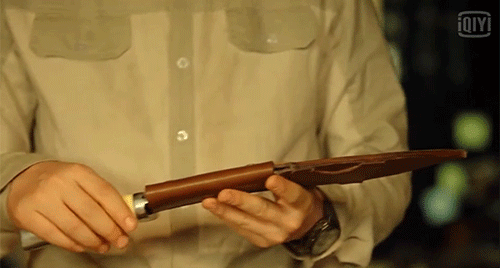
I’m not a “knives are sexy” person, or I should say, I never WAS a “knives are sexy” person before.

I do have a strong affection for my Alaskan ulu kitchen knife, which is a godsend for anyone who is arthritic (me) or who is an upper-limb amputee (my family member) or is hemiplegic (different family member), but that’s as much attention as I’ve ever paid to a knife.
Until now:
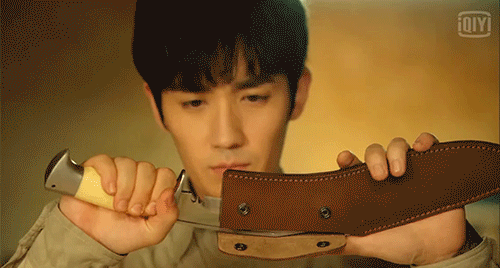
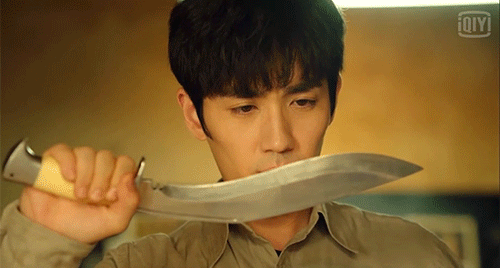
(*whisper* lick it)
Ahem.
This is a kukri, a traditional knife of the Gurkha people in Nepal and India. It’s similar to a machete but it has a downward-curving blade, which means you can slash downward forcefully without bending your wrist. It’s excellent for cracking crustacean shells heavy chopping, as well as combat. Wikipedia doesn’t know why there are notches near the base of the blade but sure does have some theories.
The handle looks to be a mix of metal and ivory. Hopefully antique ivory, or ivory from a properly-compensated voluntary donor. [That is a joke, the ivory trade is bad, don’t kill elephants, etc.] The case is topstitched leather with snaps to keep the knife from escaping. Did OP just spend an hour learning too much about knives? She did. Does this mean she’s going to also make an effort to learn something about watches, a critically overlooked area of her menswear commentary? It does not.

Look 18 is a classic explorer’s rig that looks like it came out of the Banana Republic catalog back in 1987 when the name “Banana Republic” still kind of suited the clothes sold there. (Google it and be startled) This look features dark brown trousers that are comfortably loose but still well-fitted and flattering. The shirt is two warm tans--a dark one for most parts, and a lighter one through the chest and inner arms. This gives it a nice depth and keeps it from looking bland. This outfit also features Wu Xie’s watch, which...is round? and tells time.
(more after the cut!)
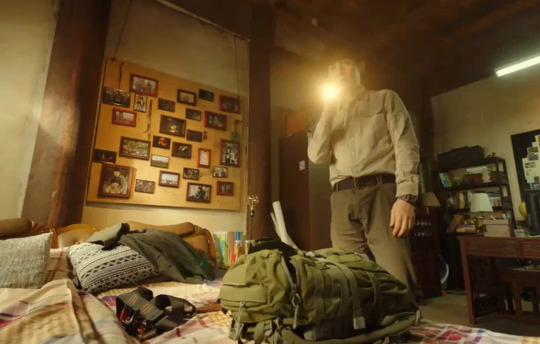
This look features the first of many, many, many times that a character will shine a flashlight directly into the camera. Which makes it painful to watch the show on my tablet in the dark when my bedmate is asleep. Knock it off, characters!
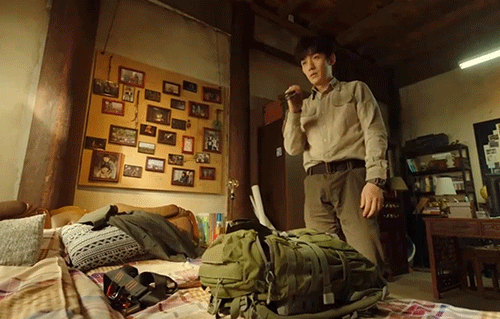
Side Note: Wu Xie’s room has some good features. He’s got a giant bulletin board holding framed photos of all the adventures in which he was played by a different actor. This makes it easy to move his photo collection when his uncle decides to be a dick about the rent.
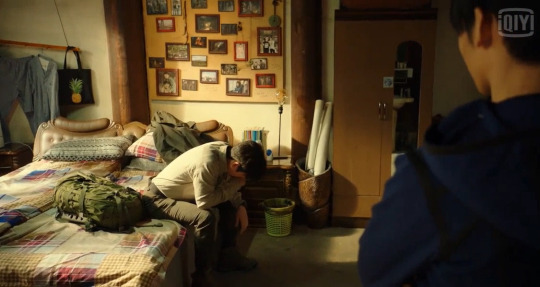
Wu Xie’s bed is big and comfy-looking, with a variety of patterns and textures; appropriate for a person who’s planning on dying, or having an increasingly complicated love life, or both. This bed has room for a 100-year-old boyfriend, a 20-year-old girlfriend, and a thousand-year-old crustacean-brained princess, as long as everyone’s friendly.
It also has a padded headboard, which is so important when you are dating a paper-mache person with a fragile head. This padded headboard also has curved head/neck support things that look just the right size for a person to grab onto with both hands and hold on for dear life. It looks antique, which means Wu Xie bought it for the aesthetic value and definitely not for fucking, right? Definitely not. For fucking.
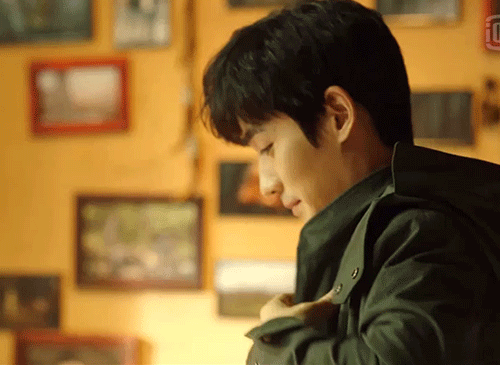
Wu Xie tops off Look 18 with the handsome swamp green coat from their recent tomb adventure, now completely unmuddy thanks to the world’s greatest dry cleaner, and with a strappy, practical backpack.
This warm-toned outfit and the buttery colors of the room are perfect for having an intimate, deeply truthful conversation...
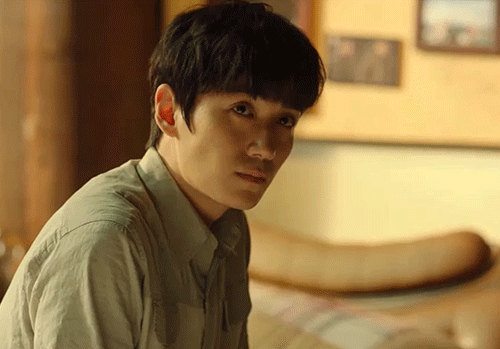
....in which you gently crush your dear one’s heart into powder.

Look 19 is Xiao Ge’s blue hoodie and black pants combo, which we finally get to see in the full light of day.
The hood is good for hiding in when you want to cry.
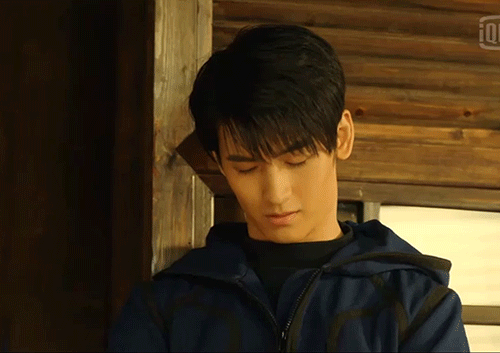
This hoodie looks black in low light, but is actually navy blue with black piping, placket, and zipper.
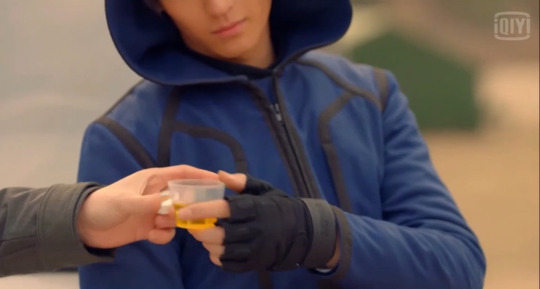
The ensemble features black trousers with an eye-catching vertical silver-toned zipper on the front pockets. Black boots and black tactical gloves round out the look.
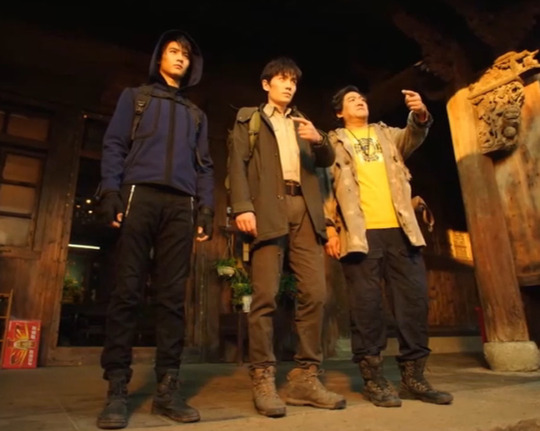
Side note: each of the Iron Triangle guys has his own backpack style. Wu Xie’s is an olive green expedition pack. Pangzi’s is two-tone canvas and leather.
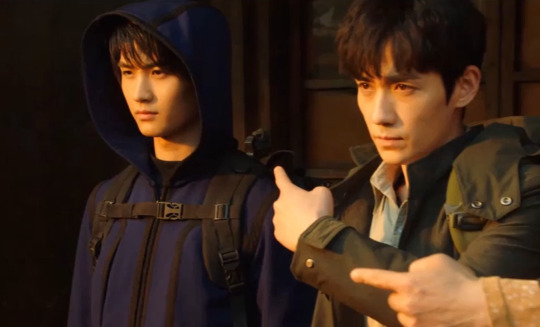
Xiao Ge’s is black tech fabric, and features a chest strap to keep it from shifting around when he is kicking asses. The black straps coordinates well with the black piping on his hoodie.
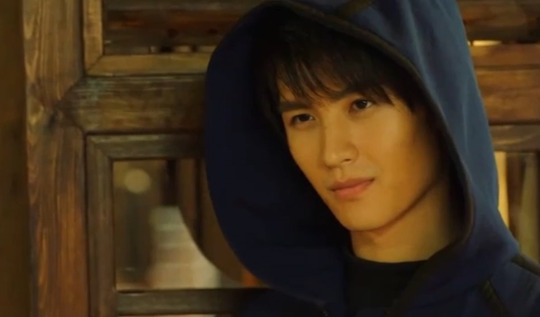
This outfit is a good one to wear while you exchange tender gazes of pure unconditional love with the guy who is crushing your heart into powder.
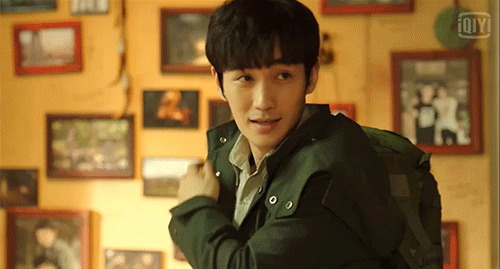

I don’t need to look at Pangzi I know what Pangzi looks like and anyway I glanced at him already today.

Did OP slow these gifs way down purely to keep from giving anybody eye strain? She did. OP is considerate of your eyes. Speaking of eyes, awww. Xiao Ge sure is bros with Wu Xie, you guys.
Look 20: Liu Sang! Liu Sang! Liu Sang!
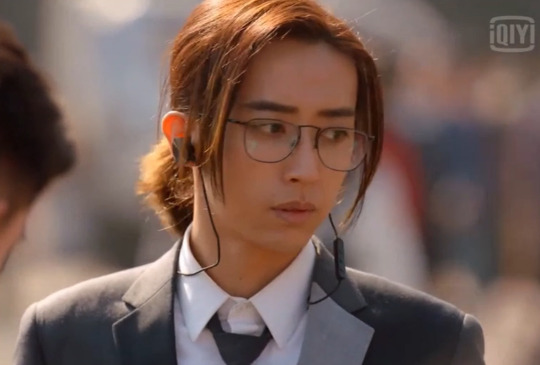
Actor Liu Chang, a man who can wear literally anything and make it look fucking amazing, makes his entry onto the scene in a good, but understated, suit.
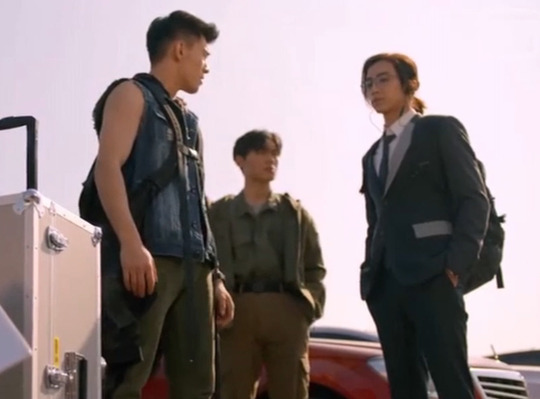
Most of the suit is a charcoal grey, but it has a single light grey lapel and pocket flap, to keep things interesting. He’s wearing it with black Oxford shoes that have a small red, white, & blue tab poking out the back. So he’s dressed conservatively, but with a bit of flair.
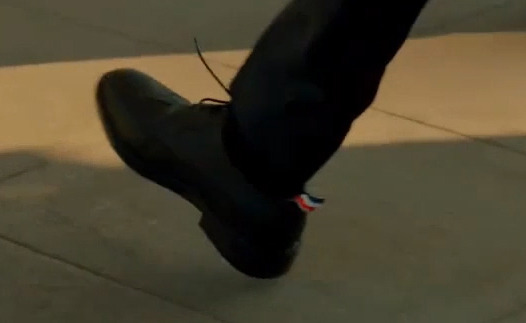
He’s accessorized the look with perfectly fine, but not very interesting, black wirefame glasses that he’ll replace with cooler ones after some time underground. He’s got a cartilage piercing in his left ear with a flat black oblong earring. Because of his extreme hearing, he’s wearing noise-cancelling earphones.

This look says, “normalize the use of adaptive tech.” These are probably - in real life - not as effective as the larger over-ear headphones a lot of noise-sensitive people use, but their sleekness and elegance match the rest of Liu Sang’s accessories and clothing.
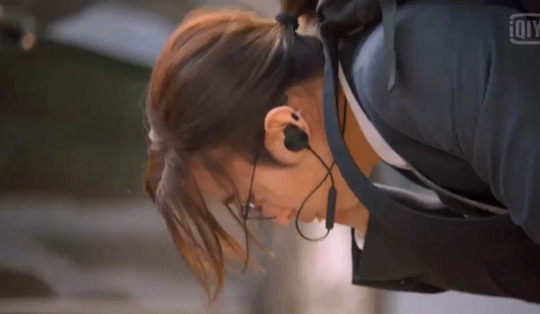
Because of his noise sensitivity, Liu Sang pukes as soon as he gets out into the crowded street. He vomits neatly into a drain, however, in the way of someone who’s used to managing this symptom and isn’t going to let it spoil his outfit. We stan a neuroatypical king.
More Lewks coming soon!
#the lost tomb reboot#reunion: the sound of the providence#liu sang#zhu yilong#liu chang#lost tomb lewks#wu xie#canary3d-original#don't worry I haven't forgotten restless rewatch#I just had to write about the knife first#the kniiiiiffffeeee#spoilers
107 notes
·
View notes
Text

• 442nd Infantry Division
The 442nd Infantry Regiment is an infantry regiment of the United States Army and best known for its history as a fighting unit composed almost entirely of second-generation American soldiers of Japanese ancestry (Nisei) who fought in World War II. Beginning in 1944, the regiment fought primarily in the European Theatre, in particular Italy, southern France, and Germany.
Created as the 442nd Regimental Combat Team when it was activated February 1st, 1943, the unit quickly grew to its fighting complement of 4,000 men by April 1943, and an eventual total of about 14,000 men served overall. The unit earned more than 18,000 awards in less than two years, including 9,486 Purple Hearts and 4,000 Bronze Star Medals. In 2010, the Congressional Gold Medal was awarded to the 442nd Regimental Combat Team and associated units who served during World War II. Most Japanese Americans who fought in World War II were Nisei, born in the United States to immigrant parents. Shortly after the Imperial Japanese Navy's attack on Pearl Harbor on December 7th, 1941, Japanese-American men were initially categorized as 4C (enemy alien) and therefore not subject to the draft. Not long after the attack on Pearl Harbor On February 19th, 1942, President Franklin D. Roosevelt signed Executive Order 9066.
It was targeted largely for the internment of people of Japanese ancestry from the West Coast. In March 1942, Lieutenant General John L. DeWitt, issued the first of 108 military proclamations that resulted in the forced relocation from their residences to guarded relocation camps of more than 110,000 people of Japanese ancestry from the West Coast, the great majority of the ethnic community. Two thirds were born in the United States. The US government required that all internees answer a loyalty questionnaire, which was used to register the Nisei for the draft. Question 27 of the questionnaire asked eligible males, "Are you willing to serve in the armed forces of the United States on combat duty, wherever ordered?" and question 28 asked, "Will you swear unqualified allegiance to the United States of America and faithfully defend the United States from any or all attack by foreign or domestic forces, and forswear any form of allegiance or obedience to the Japanese emperor, or any other foreign government, power or organization?"
Nearly a quarter of the Nisei males answered with a no or a qualified answer to both questions in protest, resenting the implication they ever had allegiance to Japan; some left them blank. Qualified answers included those who said, yes, but criticized the internment of the Japanese or racism. Many who responded that way were imprisoned for evading the draft. more than 75% indicated that they were willing to enlist and swear allegiance to the U.S. The U.S. Army called for 1,500 volunteers from Hawaii and 3,000 from the mainland. An overwhelming 10,000 men from Hawaii volunteered. The announcement was met with less enthusiasm on the mainland, where most draft-age men of Japanese ancestry and their families were held in internment camps. Roosevelt announced the formation of the 442nd Infantry Regimental Combat Team, saying, "Americanism is not, and never was, a matter of race or ancestry." Ultimately, the draft was instated to obtain more Japanese Americans from the mainland and these made up a large part of the 14,000 men who eventually served in the 442nd Regiment.
The 442nd Combat Team, less its 1st Battalion, which had remained in the U.S. to train Nisei replacements after many of its members were levied as replacements for the 100th, sailed from Hampton Roads, Virginia, on May 1st, 1944 and landed at Anzio on May 28th. The 442nd would join the 100th Battalion in Civitavecchia north of Rome on June 11th, 1944, attached to the 34th Infantry Division. The 1st Battalion, 442nd Infantry at Camp Shelby was then redesignated the 171st Infantry Battalion (Separate) on September 5th, 1944. The newly-formed Nisei unit went into battle together on June 26th, 1944 at the village of Belvedere in Suvereto, Tuscany. The battle of Belvedere showed that the 442nd could hold their own and showed them the kind of fighting the 100th Battalion had gone through in the prior months. After only a few days of rest, the united 442nd again entered into combat on July 1st, taking Cecina and moving towards the Arno River. On July 2nd, as the 442nd approached the Arno, 5th Battalion engaged in a hard-fought battle to take Hill 140.
The 442nd, alongside the 100th Battalion continued to fight in Italy reaching the German Gothic Line. On the Italian Front, the 442nd had contact with the only segregated African-American active combat unit of the U.S. Army in Europe, the 92nd Infantry Division, as well as troops of the British and French colonial empires (West and East Africans, Moroccans, Algerians, Indians, and Gurkhas), and the non-segregated Brazilian Expeditionary Force. The 442nd also served in France for a time. The 100th/442nd Regimental Combat Team is the most decorated unit for its size and length of service in the history of American warfare.
The record of the Japanese Americans serving in the 442nd and in the Military Intelligence Service (U.S. Pacific Theater forces in World War II) helped change the minds of anti-Japanese American critics in the continental U.S. and resulted in easing of restrictions and the eventual release of the 120,000-strong community well before the end of World War II. In Hawaii, the veterans were welcomed home as heroes by a grateful community that had supported them through those trying times. However, the unit's exemplary service and many decorations did not change the attitudes of the general population in the continental U.S. to people of Japanese ancestry after World War II. Veterans were welcomed home by signs that read "No Japs Allowed" and "No Japs Wanted", denied service in shops and restaurants, and had their homes and property vandalized. Anti-Japanese sentiment remained strong into the 1960s, but faded along with other once-common prejudices, even while remaining strong in certain circles. Conversely, the story of the 442nd provided a leading example of what was to become the controversial model minority stereotype. In post-war American popular slang, the phrase "going for broke" was adopted from the 442nd's unit motto "Go for Broke", which according to the 1951 film Go for Broke! was derived from the Hawaiian pidgin phrase used by craps shooters risking all their money on one roll of the dice. The 442nd RCT was inactivated in Honolulu in 1946, but reactivated in 1947 in the U.S. Army Reserve.
#us history#second world war#world war 2#world war ii#united states#u.s infantry#military history#japanese history#unsung heroes#controversy#long post
70 notes
·
View notes
Text
SSAFA, the Armed Forces charity supports the entire Armed Forces family. It is a UK non-profit charity that provides long life support to individuals who are currently serving or have served within the British Armed Forces and their families. This impressive organization has been operating since 1885 and was founded by Major James Gildea. Today SSAFA boasts of 5,000 volunteers to help upwards of people every year and is the UK's oldest national tri-service Armed Forces charity.

Why is Collectable Corner choosing to support SSAFA?
The problem people tend to have when it comes to charitable donations and fundraising is not knowing how much of the donors funds are reaching the desired goal of helping someone in need. While we can't speak for the charities themselves, we (myself and my family) can talk about our experience with SSAFA and why we're confident that the money gets exactly to where it is needed the most.
Brian Cook, a loving husband, father, great grandfather and (my) grandad served in the Royal Air Force (RAF) and was a part of the Christmas Island nuclear bomb tests in the 1950's which exposed the soldiers to radiation due to being closer to the bombs than any human should ever be. Today only a handful of the Suicide Squad Veterans are still alive. Almost (if not all) of the soldiers involved died through multiple various cancers and ill health such as chronic arthritis and heart, lung, liver diseases. There is evidence to support the fact that these health conditions can be directly related to what the soldiers were made to do. But not only has it affected the veterans themselves but their families genetics has also caused numerous health problems generation after generation. This will carry on for generations to come also and the UK is one of the only countries involved to not accept these findings and therefore the support for these individuals and families has been lacking. Unfortunately Brian (grandad) was no different, neither is his family.
In January 2018, Brian fell ill and was taken to hospital where within three days of admittance was diagnosed with late stage liver and lung cancer, all that could be done was to make him as comfortable as possible. Over the course of the following four days we prepared for his return home. We gave a sofa away from our living room to make room for the hospital bed due to Brian losing the use of his legs, and we turned a downstairs room into a bathroom. Monday came round and Brian had been in hospital for 7 days, Monday to Monday. He arrived home via hospital transport and we got him settled in as best we could. Grandad always wanted to die at home my grandmother tells me. At 3am tuesday morning, after being home for around 10 hours Brian, my grandmother's husband, my mother's father, and my very special grandad passed away. It was, as anyone who has lost a loved one will know, devastating. It all happened so fast.
During the period between Brian's death and his funeral service SSAFA actually offered us money towards the cost, which we refused based on the fact we would rather it had gone to someone more in need than ourselves, but it stuck with us in our hearts and minds. What we learned is that SSAFA, the Armed Forces charity, gets the money and help to the people who really need it. We didn't expect nor ask for it either. At this period in Collectable Corner didn't exist, what existed was another hobby project that never worked out but a vow was made by myself to use the public platform to raise donations for SSAFA in loving memory of RAF Veteran Brian Cook. Now after a couple of years of hard work, dedication and grind, Collectable Corner, i am elated to tell you is working out and in a position to honour that vow and may he rest in peace.
Who does SSAFA help? And how does it help?
SSAFA, the Armed Forces charity helps people in a variety of ways.
For currently serving personnel and their families provides:
Support in service communities
SSAFA has a network of volunteers on Army, RAF, and Naval bases in the UK and around the world who give local support.
Housing
Housing for wounded, injured, and sick serving personnel and their famiies SSAFA Norton House, Stanford Hall provide home-from-home accommodation for families visiting wounded, injured, sick service or ex-service personnel and outpatients. SSAFA also provides day-to-day management of Fisher House UK at the Queen Elizabeth Hospital, Birmingham (QEHB).
Mentoring for service leavers
SSAFA's mentoring scheme was set up in 2011 and supports those transitioning out of the Forces. SSAFA's volunteer mentors provide support to wounded, injured, and sick leavers through a long-term 'one-to-one' relationship that underpins the transition from the military. SSAFA Mentoring is nationally accredited by the Mentoring and Befriending Foundation.
Adoption for military families
SSAFA is a registered adoption agency dedicated to helping military families through the adoption process.
Additional need and disabilities support
SSAFA provide specialised support to military families with additional needs including their Forces Additional Needs and Disability Forum (FANDF).
Short breaks for children and young people with additional needs from Forces families
SSAFA coordinates holidays and events that focus on offering new experiences and activities for children and young people from services families.
Stepping Stone Homes for women and their children with a service connection
Stepping Stone Homes provides short-term supported accommodation, help, and advice during difficult times. Female spouses and partners of serving or ex-service personnal, along with their dependent children are all eligible to stay there.
Professional health care
SSAFA's professional health care staff provide patient-focussed care to military families worldwide.
Personal support and social work for the RAF
Working alongside the RAF, but outside the Chain of Command, SSAFA staff provide support for RAF personnel and their families worldwide.
Independent Service Custody Visiting
SSAFA provides independent oversight of Army Service Custody facilities.
Support available to veterans and their families:
Housing advice
SSAFA offers practical housing advice and support to Armed Forces veterans and their dependents including guidance around housing benefits and accessing social housing.
Debt advice
SSAFA can help veterans to get advice on dealing with debt when they have fallen behind on their bills or repayments to credit cards and are struggling to get by or at risk of losing their home.
Mobility assistance
SSAFA volunteers seek financial assistance for veterans to help maintain mobility and independence at home. Trained volunteers can help veterans get mobility equipment such as Electronically Powered Vehicles (EPV) or mobility scooters, stair lifts, riser and recliner chairs.
Providing household goods
SSAFA can provide veterans with essential household items, including white and brown goods.
Support for homeless veterans
SSAFA has a range of specialist services to support veterans who are homeless or facing homelessness.
Joining Forces
SSAFA's partnership with Age UK to improve the lives of veterans born before 1950.
Gurkha services
Providing tailored support for Gurkhas and their families who live in the UK.
Glasgow's Helping Heroes
Glasgow's Helping Heroes' is an award-winning service provided by SSAFA in partnership with Glasgow City Council for current and former members of the Armed Forces and their dependants or carers who live, work, or wish to relocate there. It's dedicated team work with national and local governments and third sector providers to resolve clients employment, housing, health, financial and/or social isolation issues.
Forces helpline
SSAFA also offers Forcesline, which is a free and confidential telephone helpline, web chat, and email service that provides support for both current and ex-service men and women from the Armed Forces and their families.
As you can see, SSAFA goes above and beyond to help as many serving and veteran pesonnel and their families as possible who have sacrificed for our country and ensures the aid gets to exactly the places it is needed most. To do this requires a lot of time and money, as you can imagine.
Covid-19 and the SSAFA Emergency Response Fund
Covid-19 has had an impact on everyone regardless of if you are ill. It looks like it will remain a part of our lives for a long time to come, heck, it may be a permanent part of modern life. At SSAFA, calls and requests for help from the vulnerable people, such as the elderly, low income households, and those with serious underlying health conditions. In response to this SSAFA has an Emergency Response Fund. The strain on the organization is obviously high as more people need help with mental health, housing, and financial issues. SSAFA provides this support for the British Armed Forces, serving and veteran personnel, and their families but to do this SSAFA needs to ensure it's staff and volunteers are kept as safe as possible with PPE. Combine the huge rise in help requests and the need to protect SSAFA staff, volunteers and those they help results in a large increase in costs which is why donations are so important and critical to its operations to continue the vital work SSAFA does.
What is Collectable Corner doing to help?
We have purchased over a thousand Royal Air Force (RAF) Dog Tags, Ball Chain Necklaces, Rubber Silencers and Packaging, which we are asking for a donation of £10 per set plus £2.29 for postage of which 100% of the £10 is being donated to SSAFA. Collectable Corner is paying any processing fees and extra postage fees that may incur. Essentially, the Dog Tags are a token of gratitude from us to you for making your donation and helping us to support and help as many people as we can together. In total we have 504 sets of Dog Tags available so that equates to £5,040 in funds to generate. We also have the ability to purchase more should we require them.
How are the donations being made and how often?
We will deposit the donations directly to SSAFA at the end of each month via bank transfer to an account SAFFA has provided to us*.
How will donors know that donations were made?
We understand how important it is to be absolutely transparent with charity work to ensure that everyone knows when and how much is being donated and it is just as important to us at Collectable Corner as to donors and customers. Collectable Corner will of course be publishing monthly updates on our blog and in our newsletter which we urge you to sign up for, along with publishing the donation receipts and sales records minus people's private data such as names and addresses etc. We also have a backend application running on our website which allows visitors to CollectableCorner.shop to view in real time exactly how many sets of dog tags have been claimed.
Share your experiences of SSAFA
Collectable Corner is welcoming you to share your stories with visitors to our website. On each product page is a review section where anyone can make use of by letting others know your story. Maybe it is about how SSAFA has helped you or someone close to you, or maybe you have fundraised and donated in the past. Maybe you are someone who works or have worked with and volunteered for SSAFA who wants to share with us all, or maybe you simply want to say hello.
Thank you...
We, at Collectable Corner, want to thank SSAFA for the amazing work the staff and volunteers have, will and do do. The impact this charity has had on so many lives truly is something to be marvelled at.
Thank you to anyone who helps us to make some real world differences by ordering a set of RAF dog tags with the knowledge that you are donating to a truly awesome cause.
Thank you to all of the past, present and future British Armed Forces personnel who have sacrificed, and do sacrifice everything for our great nation. You make us proud each and every day.
Finally, thank you Brian Cook, my Grandmother's Husband, my Mothers Father, a Great Grandfather, and my Grandad for being such an inspiration, thank you for being the best and only Father i ever had. May you sleep easy and Rest in Peace.
*Please note that the information in this article has been vetted by and in part supplied by SSAFA prior to being released to the public and is accurate at the time of this publication. Collectable Corner has the permission of SSAFA of the logo to be used and they are the copyright owner. SSAFA is a non-profit charity registered in England and Wales (210760), Scotland (SCO38056) and the Republic of Ireland (20202001). Collectable Corner is not in a partnership with nor affiliated by SSAFA, however we are in contact. Anyone who wishes to confirm that SSAFA is aware of Collectable Corner's campaign to raise donations and the methods being used can do so by emailing [email protected] or [email protected]
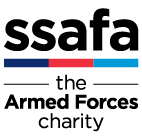
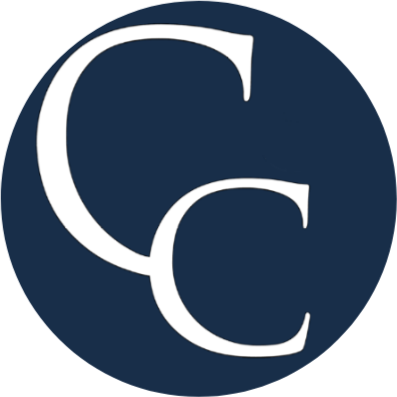
1 note
·
View note
Text
Experiences in High Altitude Area ---- Joshimath Sector
Soon after the conclusion of the Surrender Ceremony, we received urgent instructions from Gen S H F J Manekshaw, the COAS specifying that the POWs must be treated in accordance with the Geneva Conventions of 1949.These were amplified in terms of specific guidelines to be implemented at all levels.It was emphasised that the status of the Pakistan Army which had surrendered had now changed from Enemy to POWs. All Units & Formations were assigned their new responsibilities for various PW Camps. Consequently, our Regiment was given the task for PW Camp of Pakistan Artillery Brigade in Rangpur. Next day, we began the process of taking charge of their guns & equipment, ammunition, vehicles, stocks of rations & fuel and other military hardware.In addition, the accounting & protection of the prisoners was also our main responsibility.

Meanwhile, the euphoria of our magnificent victory as a result of the blitzkreig joint operations continued in all the Units.Our Regiment began the celebrations by conducting a Havan in the Unit Mandir. It was an act of obeisance which acted as a spiritual chord among the troops. This was followed by special Sainik Sammelan addressed by the Commanding Officer.This event held on a monthly basis provided the opportunity for the jawans to raise any issue of concern and put across their suggestions to the Battery Commanders & the Commanding Officer.It also enabled monthly review of tasks & allotment of subsequent tasks / introduction of new welfare measures.Sainik Sammelan concept has proved to be a useful method of interaction, motivation and effective man management.In this special Sainik Sammelan, our CO complimented each and every member of the Jat Balwan parivar for his dedication in achieving the ultimate mission, in an exemplary manner.He also announced the promotions and gave awards for top performers of each Trade, during the last three months.The same day, we organised an entertainment programme & Bara Khana for the whole Regiment.The programme had dance,drama & popular Ragini session put up by our talented artists.This was another method of informal interaction and team bonding within the JATs. I personally learnt quite a lot about man management from all the three events on this special day of celebrations.Besides, I felt delighted to be baptised in War & accepted with open arms, by my new Fauji family.
Next day, our CO held a conference of all Officers & JCOs and instructed us to prepare a summary of events in the last two months, as also the lessons learnt at each stage.These would be essential for compilation of War Diary for Regimental History.Thereafter, we were grouped into smaller teams to recapitulate each event & record the critical aspects. Our Team of all the GPOs and the JCOs at the Gun End summarised the following key learnings: ----------
Speedy deployment and ammunition supply proved crucial.
Fire plans had to be modified based on the situation.
Accurate fire support was the critical battle winning factor.
Team work was most important ingredient for success.
Leaders accomplished their mission by setting the example.
Simultaneously, we completed all the maintenance tasks pertaining to our Guns,Vehicles,Communication equipment and other stores.All of us also got the chance to refresh and rejuvenate, after one month of intense operations. In the last week of Dec, our CO received his posting order, as expected after two years of Command.He was regarded as a Father figure by all of us & was given an emotional farewell on 15 Jan 1972. Thereafter,we were intimated the plans for move of the POWs to PW Camps to be established in India.This movement was to be organised by trains from different stations in Bangladesh to several destinations in India.Our Regiment was responsible to provide the escort and protection till the departure of the prisoners who were in our PW Camp.This task was completed meticulously by the end of the month.
Thereafter, the Regiment de-inducted and reached our peace location at Binnaguri.We began the process of settling down in our accommodation which had been locked down for almost four months.Maintenance of the Office buildings, Living barracks,Cook houses, MT & Gun sheds, Ammunition dump, Quarter Guard and the Officers Mess had to be completed on priority.PT and Games also commenced simultaneously.In mid Feb, we were surprised to receive the Move Order for the Regiment to move to Joshimath in Garhwal region & concentrate at Raiwala ( nearest Railway Station ) by 30 Apr.The instructions also specified that we will be equipped with a new equipment produced indigenously ----- 75/24 Pack Howitzers for which a Conversion training will be organised at Raiwala.

I was curious to learn about the entire process of move of the Regiment. The Officiating CO organised the Regiment into three parties ;--- the Advance party, the Main body & the Rear party. Each party was explained the outline plan & allotted the tasks to be done at the new location.Requisition was placed for Special trains for move to Raiwala.The Advance party led by a Battery Commander, with representatives of each Battery, left by mid March, since they had to be acclimatised at Joshimath, before taking charge at further locations in high altitude areas.The Main Body boarded the Special train which was placed at the railway siding on 15 Apr. Interestingly, the composition of the Train was customised to include passenger coaches,military kitchens, covered wagons & open rakes.The Regiment was given a farewell Bara Khana by other Artillery Regiments in Binnaguri , just before the departure. It took us seven days to reach Raiwala, after a memorable journey, interspersed with planned halts for every meal (meals were prepared by our cooks in the military kitchen).
At Raiwala, we set up a tented Camp in an area suitable for Conversion training.The Guns & the Instructors in Gunnery had been assembled from various Units holding 75/24 Pack Howitzers. An intense capsule of two weeks was conducted, both during day & night, before we proceeded for practice firing in Asan Ranges near Dehradun. On return, we got ready to move immediately to Joshimath.This movement was along a mountainous road and the convoy time was about 12 hours.At Joshimath, we were received by our Advance Party who briefed us about the process of acclimatisation. We spent two weeks at Joshimath itself, when we were given comprehensive briefings, at the Brigade HQ, about our operational role at the LAC (Line of Actual Control), deployment areas & terrain briefs. We were also explained about special aspects of defensive operations in high altitude areas ( over 10,000 ft ) which we would further practice in conjunction with affiliated Infantry Battalions. Snow clothing & equipment was also issued to all personnel. Next day, each Battery moved to its allocated deployment area located on a different axis, while the Regiment HQ remained in Joshimath , adjacent to the Mountain Brigade HQ.I was inter-posted from Romeo Battery to Papa Battery,to give me the opportunity to acquaint myself with the jawans of another sub-unit within the Regiment.This proved beneficial in the long run.
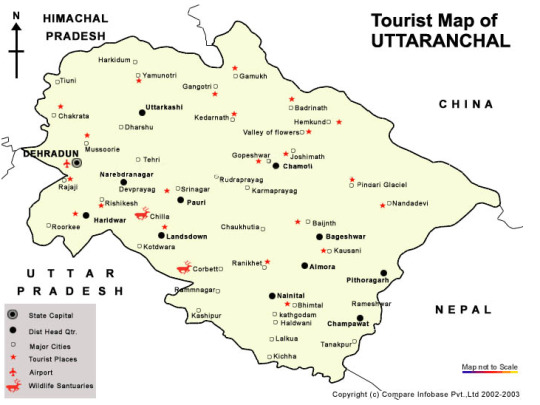
Lt Col R P Chadha joined the Jat Balwan family & took over as the new Commanding Officer on 13 Jul 1972. He carried out familiarisation visits to all the Battery locations and was impressed with the state of operational preparedness.He exhorted all of us to face the challenges of terrain, climate & enemy resolutely.We were also advised to complete the winter stocking, in proper bunkers in each gun position, latest by end Sep.On 01 Aug, we celebrated our Raising Day in respective locations, at an altitude of 10,000 ft !! It was yet another memorable experience.
Thereafter, we attended collective training with the Gurkha Battalion for a duration of one month. All of us noticed the traits and behaviour pattern of the Gurkhas, well known for their bravery historically. I really liked their genial nature and their persistence while accomplishing any task.The Khukri was their special possession & martial arts was a favourite pastime.At the end of training, they invited us for their Bara Khana celebrations, when we observed some of their rituals .On completion of collective training, I requested for Annual Leave since I had not gone home ever since reporting in the Regiment one year ago. My CO sanctioned my leave for a duration of 45 days so that I could report back before the beginning of snowfall.This time, I proceeded to Aurangabad where my father was transferred recently.
I returned after well deserved leave & reported to the Adjutant at Joshimath. I had to undergo acclimatisation again before moving to my Battery location.I was thrilled to see the snow covered peaks in the Himalayas for the first time. The ambient temperature had dropped to minus 5 degrees Centigrade already.Some of the roads/tracks were covered with snow but our Gun pits were still clear of snow.The winter stocking had been completed as per the SOP. A Helipad had been constructed in close vicinity of our Gun position, to enable evacuation of casualties in case of any emergency. We used this helipad for a grand celebration of Diwali, in first week of Nov.I was told that every festival was celebrated in the Balwan family jointly ---- in a Home away from Home!! As expected,the intensity of snowfall increased in Dec/Jan and the temperature plunged to minus 20 degrees Centigrade, due to the wind-chill factor.We took extra precautions to maintain our fitness during these extreme conditions ---- wearing of winter clothing,use of Bukharis/ kerosene heaters, snow clearance around the bunkers, regular jogging & games such as Volleyball & Basketball, snow skating etc.We improvised the process of obtaining water by melting the snow in diesel barrels.This water was then used for cooking,washing & bathing purposes. The electric supply was provided by the generator but was restricted only to the CP, living bunkers and cook house. There were several occasions when the road movement was disrupted due to land slides, which had to be cleared by the Border Road Organisation. Air drop of supplies had to be resorted in some remote areas.The situation improved only in Apr, when Badrinath shrine opened after a closure of nearly six months. I availed the opportunity to visit the Temple before the rush of pilgrims.Incidentally, Badrinath was just 45 kms from Joshimath.

On 12 Jun, I got a call from the Adjutant asking me to report urgently at Regiment HQ next morning. I thought about the possible tasks which may be assigned to me but could not guess any likely task at this short notice. I left my Battery location at the sunrise, so as to reach Joshimath in time.I reported to the Adjutant who took me to the TIGER immediately. I was ordered to Take Post & the CO gave me a total surprise by putting on the rank of a Captain on my uniform.This was the first step on the ladder, on completion of two years of service on 13 Jun 1973.Every promotion is important but the very first promotion had greater significance!! Later in the evening, I hosted the promotion party in the Officers Mess.Next day, I gave a separate party to all the jawans of my Battery.
In the last week of Sep,, I was detailed to attend Regimental Signal Officers Course & had to report at MCTE,Mhow on 25 Oct.The short notice was a challenge since I did not have much time for pre- course training,which would have provided a good start during the Course. However, I put in extra efforts to grasp all technical aspects taught as per the curriculum & finally attained Alpha grading. I returned to Joshimath after two months, with renewed confidence and was appointed the Signal Officer responsible for all communication aspects.This implied that I would be posted as the RSO in the Regiment HQ and remain at Joshimath .We celebrated the New Year eve around the camp fire & resolved to further improve our professional standards in 1974.
In Mar, my CO detailed me for leading a Trekking expedition to Hemkund Sahib, located at an altitude of 4600 metres. The Trek had a total of 30 jawans , with representatives from all the sub- units. The Trek commenced from our Regiment HQ & had a brief halt at Govind Ghat. The next part was trekking upto the Base Camp at Ghangaria, which was 14 km away.Then ,we had a night halt & began the steep climb of 6 km upto the Gurudwara. It was an exhilarating experience to be cherished as as we paid our respects at this famous shrine. By next day, we were back at Joshimath, full of Josh & lovely memories.

Thereafter, we participated in local training exercises in Apr/ May, in our respective locations. We left for Dehradun in first week of Jun, for Annual Practice Camp including practice firing which was conducted in Asan Ranges .This activity has tremendous importance in the Regiment of Artillery and is a final test of all training in the Training Year.The Regiment returned to its operational locations by mid Jul. We celebrated yet another Raising Day, in our traditional style on 01 Aug. Soon thereafter, we received the move order for the move of the Regiment back to Binnaguri ----- much to our surprise, since we had moved to Joshimath from the same location two years ago!! Move was to be completed by 30 Sep 1974.By coincidence, our CO also received his posting order at the same time.He was given a farewell by each Battery due to dispersed deployment & a final emotional send off from Joshimath on 07 Sep 1974.
2 notes
·
View notes
Text
Vocabulary (pt.dcclxxxviii)
Words taken from The Thorn Birds (1977) by Colleen McCullough:
yaws (pl. n.) a contagious tropical skin disease with large red swellings.
beriberi (n.) a disease causing inflammation of the nerves due to a deficiency of vitamin B1 (thiamine), and mainly associated with rice-based diets.
Atabrine (n.) trademark. another term for quinacrine.
Gurkha (n.) a member of the principal Hindu race in Nepal.
atoll (n.) a ring-shaped coral reef enclosing a lagoon.
cay (n.) a low insular bank or reef of coral, sand, etc.
hydrocephalus (n.) an accumulation of fluid in the brain, especially in young children, which makes the head enlarge and can cause mental handicap.
schism (n.) the division of a group into opposing sections or parties.
bandicoot (n.) any of the small insect- and plant-eating marsupials of the family Peramelidae, found in Australasia.
French letter (n.) British informal. a condom.
1 note
·
View note
Link
Ethnic tensions are coming to the fore, but many minorities find solidarity with activists.
Jessie Lau
November 7, 2019, 4:53 PM
A man waves an Indian flag near Chungking Mansions, a popular haunt among minority South Asians and Africans in Hong Kong, as police keep watch at a crosswalk during a pro-democracy rally in Tsim Sha Tsui district on Oct. 27. Philip Fong/AFP via Getty Images
HONG KONG—For Zab, Hong Kong has always been home. While the 25-year-old has roots in Pakistan, he was born, raised, educated, and now works in the city. This summer, Zab—who gave only his last name out of safety concerns—has been a cautious participant in several Hong Kong protests, standing out as one of the few brown faces among the protesters. After tear gas was fired during one rally, he ran into a police blockade as he attempted to flee. Trapped and struggling to breathe, he was terrified of being interrogated. But the police let him pass—a decision Zab suspects was related to his Pakistani ethnicity. “They probably thought I wasn’t a Hong Kong person,” he said.
This year’s protests are bringing Hong Kong’s ethnic tensions to the fore. After a mob assaulted commuters in Yuen Long train station in July, Nepali men in the neighborhood were abused by locals and accused of attacking civilians. Hong Kong’s railway corporation came under fire for reportedly planning a task force of former Gurkhas to enforce bylaws during the crisis because, in the words of a railway executive, “Nepalese do not understand Cantonese, [and] thus they will be less provoked.” Last month, when an assault on the pro-democracy leader Jimmy Sham left him lying in a pool of his own blood, local media claimed his attackers were South Asian without evidence.
Minority leaders rushed to publicly condemn the violence and support Sham—as well as privately urge community members to lie low in case of retaliations. Most recently, after police doused a mosque using water cannons with blue dye to clear a peaceful protest supporting ethnic minorities, demonstrators helped clean the mess and rallied around the community. In a moving show of solidarity, they organized a Thanksgiving gathering at Chungking Mansions, a local hub for ethnic minority workers and asylum-seekers.
Hong Kong’s identity crisis has been exacerbated in recent years. China’s authoritarian interventions have triggered a localist movement and imagined political community that sees itself as culturally, linguistically, and ideologically separate from mainland China. Since Hong Kong was handed to China by the British in 1997, those who identify as Hong Kongers grew from 35.9 percent to a record 52.9 percent this year, according to statistics from the University of Hong Kong’s Public Opinion Programme. Among locals aged 18 to 29, the percentage jumped from 45.6 percent to 75 percent. The trend holds true for ethnic minority families. Older generations are more conservative and wary of politics, Zab explained. “Our families say we are minorities here and don’t have a say. [But] I consider myself a Hong Konger,” Zab said.
Ethnic minorities such as Zab have historically been either tokenized as a symbol of diversity or demonized as scapegoats for Hong Kong’s social problems. But in the current movement, they have become a powerful marker of inclusion—especially in contrast to an increasingly ethnonationalist China, where minority groups are facing linguistic exclusion and mass detention camps.
In Hong Kong, ethnic minorities are defined by the government as people of non-Chinese ethnicity. Yet only those who do not pass as white or Chinese are considered second-class citizens by mainstream society. In 2016, excluding foreign domestic workers, 263,593 people in Hong Kong—3.6 percent of the population—fell into this group. In contrast to the generally aging population and falling birth rate, between 2006 and 2016, the number of ethnic minorities aged 15 to 24 more than doubled, and those born in Hong Kong increased from 24.5 percent to 30.9 percent.
Hong Kong has always been multicultural—not just English and Chinese but an imperial outpost drawing its population from across the British Empire. The South Asian community can be traced to the 1840s, when it defended Hong Kong as soldiers and worked alongside Eurasians as intermediaries between Chinese and Europeans. More than 1,000 Indian soldiers were killed or injured while protecting Hong Kong in the 1941 Japanese invasion. Star Ferry, Hong Kong’s main passenger ferry service, was founded by an Indian Parsi baker.
The British made heavy use of Gurkha soldiers, who helped suppress the 1900 Boxer Rebellion and established today’s Nepali community. Following World War II, inexpensive laborers from the Philippines and other Southeast Asian countries began migrating to Hong Kong to work as foreign domestic workers, supporting an emerging Chinese middle class. In the 1970s, Vietnamese refugees joined them.
Despite such crucial contributions, ethnic minorities remain systematically marginalized. Entrenched language barriers, racial profiling, and poverty remain barriers to integration. Many have long condemned the government’s failure to teach local languages to non-Chinese speakers. Until 2004, children who lacked Chinese proficiency but could not afford international schools were directed toward government institutions targeting working-class minorities, which came with social stigma. Local media and conservative groups characterized them as criminals during a sweeping anti-refugee campaignblaming asylum-seekers for stretching local resources.
While such students can now apply to other institutions, schools have independent selection criteria and are not required to provide specialized curriculum for language proficiency. A 2016 study found that less than 20 percent of jobs advertised online catered to non-Chinese speakers. Nearly one-fifth of ethnic minorities also live below the poverty line, and the poverty rate rose from 15.8 percent to 19.4 percent between 2011 and 2016.
The protest movement is hardly free of discrimination itself. When the anti-extradition protests first erupted, 29-year-old Yasir Naveed, who proudly identifies as a Hong Konger, was galvanized. Donning a white shirt with the rest of the crowd, he marched in the first rally with his 72-year-old father and 4-year-old nephew—a move to express multigenerational support. “My father is part of the senior citizens who built this city,” said Naveed, who is ethnically Pakistani. “And the future is our nephew.”
Fixing the crisis will be risky—but worthwhile for both sides.
Early on, there were already rumors that ethnic minorities were being hired to attack protesters. One day, Naveed received a message from Han Chinese protesters asking him to check the grammar on an Urdu text. It was an appeal from demonstrators asking ethnic minorities not to “accept bribes” to “beat up” protesters. Naveed was stunned. “I was so offended,” he said. He responded saying the message was grammatically correct but ethically wrong. “Did they think we are sellouts? That we’re so hungry and needy for money that a party can buy us?”
The simultaneous co-option and rejection of minorities also occurred in the 2014 Umbrella Movement and 2012 anti-national education protests. Minorities were celebrated by protesters as proof of local inclusion, but their interests were subsumed during broader political discussions, which were largely publicized and conducted solely through Cantonese, with excursions into Mandarin.
Paul O’Connor of Lingnan University called the treatment of ethnic minorities a missed opportunity. “They hold true opportunity for Hong Kong to redistinguish itself as this ‘one country, two systems’ territory because China doesn’t have the history that Hong Kong has in terms of this multicultural heritage,” O’Connor said. “Instead, their interests are being co-opted by the broader fight about Hong Kong identity and then dropped.”
In fact, Raees Baig, an assistant professor of social work at the Chinese University of Hong Kong, said pro-Beijing parties such as the Democratic Alliance for the Betterment and Progress of Hong Kong have more successfully engaged and advocated for ethnic minorities, through establishing outreach centers and English-language materials about government services.
That has left many community leaders carefully neutral. Adeel Malik, the chairperson of the Muslim Council of Hong Kong, exercised caution at present. He strongly condemned the recent violence by all parties, which he said has caused some to consider leaving Hong Kong. “If any of our community members get involved and anything turns into a riot, sadly it can be easy to stereotype the whole community,” Malik said. Arief Wahyudi, a 49-year-old local of Indonesian descent who has lived in Hong Kong for two decades, echoed his sentiments. “Violence will only fuel violence,” he said. “That’s what we’re very scared of.”
Yet there’s no denying that the current movement has brought solidarity among different Hong Kongers on a previously unseen scale—albeit somewhat accidentally. Unlike other protest movements, it has effectively used creative and grassroots messaging to target a global audience—inadvertently extending accessibility to local non-Chinese speakers, said Puja Kapai of the University of Hong Kong.
Many people have been empowered by expressions of unity and have experienced political awakenings for the first time. Han Chinese locals are also becoming more aware of the ethnic minority communities. A local journalist of Pakistani descent became a protest icon after fiercely cross-examininggovernment officials in fluent Cantonese. Various ethnic minority protesters have also been embraced as Hong Kongers. “There have been blessings in disguise,” Malik said.
Jeffrey Andrews, a local social worker of Indian descent who organized the Thanksgiving gathering at Chungking Mansions, said many of the Han Chinese guests had never mingled with ethnic minorities before. “For the very first time, we’ve taken ownership,” he said. “We’ve taken a crisis and turned it into an opportunity.”
As the protests spiral into their 22nd week, Zab’s family and friends have warned him against becoming more involved in the crisis. But in Zab’s eyes, the movement has already entangled Hong Kong’s ethnic minorities, whether they like it or not. “If we consider ourselves as part of Hong Kong, we should be involved in political affairs,” said Zab, who is thinking of running for district council in the future. “We can’t just stay behind the scenes.”
Jessie Lau is a journalist in Hong Kong.
15 notes
·
View notes
Text
Gurkha Family Member Case Study: Pun and Anor (Nepal) v Secretary of State for the Home Department
Gurkha Family Member Case Study: Pun and Anor (Nepal) v SSHD #CaseStudy #Gurkha #GurkhaFamilyMember #IndefiniteLeavetoRemain #UKImmigration
The Brigade of Gurkhas has been part of the British army for over 200 years and these Nepalese soldiers have fought hard alongside other British Army regiments. However, they have not always enjoyed the same rights as other members of the British Army, including the right to stay in the UK; the country that they put their lives on the line for. Within the last 20 years the Home Office has opened…
View On WordPress
#First-Tier Tribunal#Gurkha#Gurkha Family Member#Home Office#ILR#Immigration Appeal#Immigration Solicitors#Indefinite Leave to Remain
0 notes
Photo
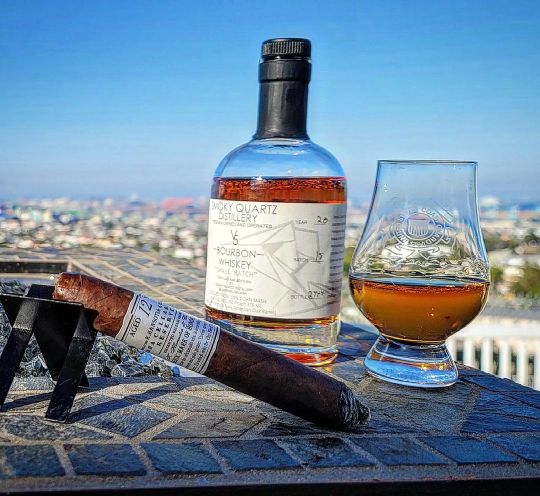
I'm back from the East Coast and enjoying this bottle from a distillery I've been eyeing since I fist heard about them. I always love checking out stores and distillerys when I travel to grab things I can't get at home. The Smoky Quartz Distillery is a veteran owned and run operation in Seabrook, NH. Their V5 Bourbon is a 100% corn mash whiskey named for 5 veteran family members that made the distillery possible.This is a 16 month old bourbon that is sweet with notes of vanilla, popcorn, and wood. Paired with a Gurkha 12 year old Celler Reserve cigar. Oh, one note about the area around Gloucester/Salem/Peabody, MA. There is nowhere good to have a drink and a cigar. ..... Pouring a toast to my sisters in arms on Women Veteran's Day. Today marks the anniversary of the singing of the Women's Armed Services Integration Act June 12, 1948. Women have served in every war since the American Revolution. There are currently approximately 2 million Women Veterans in the U.S. I'm proud to have served alongside some amazing women in my career, too many to tag here. Ladies, this toast is for you. .... "Female service members are so integrated into the military, so critical and vital to all functions of the military, from combat service support to combat support, to direct combat, that we could not go to war as a nation - we could not defend America - without our women." - Senator Tammy Duckworth (IL) ..... #womensveteransday #cigar #CigarLover #CigarAfficionado #cigarphoto #cigarsnob #cigarlife #cigarsmoke #gurkhacigars #gurkhanation #sailorandsticks #cigarsandwhiskey #TapThatAsh #whiskey #bourbon #smokyquartzdistillery #whiskeylife #WhiskeyLover #whiskeyphoto #WhiskeyNeat #WhiskeyAfficionado #whiskeygram #quote #quotestagram #uscg #usnavy #usmc #usarmy #usairforce #usspaceforce (at Coastal San Pedro) https://www.instagram.com/p/Ceupcrdr6uR/?igshid=NGJjMDIxMWI=
#womensveteransday#cigar#cigarlover#cigarafficionado#cigarphoto#cigarsnob#cigarlife#cigarsmoke#gurkhacigars#gurkhanation#sailorandsticks#cigarsandwhiskey#tapthatash#whiskey#bourbon#smokyquartzdistillery#whiskeylife#whiskeylover#whiskeyphoto#whiskeyneat#whiskeyafficionado#whiskeygram#quote#quotestagram#uscg#usnavy#usmc#usarmy#usairforce#usspaceforce
0 notes
Text
Wedding details
Following the engagement announcement, it was announced that the wedding would take place on 19 May 2018 at St George's Chapel, Windsor.The venue was previously the site for the weddings of Prince Harry's uncle, the Earl of Wessex, and his cousin, Peter Phillips, as well as the blessing for the marriage of the Prince of Wales and Camilla Parker Bowles, Harry's stepmother.
Experts expect the wedding to cost around ₤500,000;the royal family have announced that they will pay for the wedding.In December 2017 Israeli designer Inbal Dror was asked to submit designs for a wedding dress.As of January 2018, British designer Stewart Parvin is the bookmakers' favourite to design her wedding dress.
The British government has stated the wedding day is not planned to be a bank holiday, as was done for the wedding of Prince William and Catherine Middleton. Kensington Palace subsequently announced that the wedding is to be held on Saturday 19 May 2018, the same date as the FA Cup Final, which Prince Harry's brother William normally attends in his role as President of the Football Association.Holding the royal wedding on a weekend is a break with the royal tradition of having weddings on a weekday.On 12 February 2018, Kensington Palace announced that the ceremony will occur at 12:00 PM BST. In addition, the palace announced that the Dean of Windsor, David Conner, will conduct the service while the Archbishop of Canterbury, Justin Welby, would perform the marriage ceremony. There will also be a carriage procession through Windsor after the ceremony as well as two receptions. The first reception, for those attending the ceremony, will be hosted by the Queen and will take place in St. George's Hall after the carriage procession. A second reception at Frogmore House, for family and close friends and hosted by the Prince of Wales, will occur later in the day.
Approximately 250 members of the British Armed Forces were announced to be contributing to the wedding, the majority coming from units that have a connection with Prince Harry:
Members of the Household Cavalry will form a staircase party at the chapel, and will also ride as escort.
Street liners will come from:
1st Battalion, Irish Guards
1st Battalion, Royal Gurkha Rifles
3 Regiment, Army Air Corps
Royal Navy
Royal Marines
Royal Air Force
The Music
Two choirs, an orchestra and fanfare trumpeters provided music for the service. The orchestra was made up of musicians from the BBC National Orchestra of Wales, the English Chamber Orchestra and the Philharmonia Orchestra. In addition to the Chior of St George's Chapel, the Kingdom Choir, a gospel group, will also perform, while the State Trumpeters of the Household Cavalry will provide the fanfare. The music was under the overall direction of James Vivian, the chapel's Organist and Director of Music; the Kingdom Choir was conducted by Karen Gibson, while the orchestra was conducted by Christopher Warren-Green.
The Cake
For their wedding cake Prince Harry and Ms. Meghan Markle have chosen pastry chef Claire Ptak, owner of the London-based bakery @violetcakeslondon. The couple have asked Claire to create a lemon elderflower cake that will incorporate the bright flavours of spring. It will be covered with buttercream and decorated with fresh flowers🍰 Claire Ptak, who was raised in California, focuses on using seasonal and organic ingredients in her cakes. Ms. Markle previously interviewed Chef Ptak for her lifestyle website The Tig. Prince Harry and Ms. Markle are looking forward to sharing the cake with guests at their wedding
The flower arrangements
Prince Harry and Ms. Meghan Markle have chosen floral designer @philippacraddock to create the church flowers for their wedding💐 The displays in St George's Chapel will feature foliage from The Crown Estate and Windsor Great Park, and will use seasonal plants including branches of beech, birch and hornbeam, as well as white garden roses, peonies and foxgloves. The designs will reflect the wild and natural landscapes from which many of the plants will be drawn. The Royal Parks will also supply pollinator-friendly plants from their wildflower meadows. These plants provide a great habitat for bees and help to sustain healthy and biodiverse ecosystems.
Groomsman
Prince Harry has asked his brother The Duke of Cambridge to be his Best Man at his wedding to Ms. Meghan Markle. The Duke of Cambridge is honoured to have been asked, and is very much looking forward to supporting his brother at St George's Chapel, Windsor on May 19th. Prince Harry served as best man to The Duke of Cambridge at his wedding to Miss Catherine Middleton in 2011
#royal update#kensington royal#british royal family#British Royalty#Meghan Markle#Prince Harry#Royal Wedding
27 notes
·
View notes
Text
Gurkha Immigration {United Kingdom} Aschfords Law

The fearsome Nepalese soldiers have been part of the British Army for almost 200 years, their motto is "Better to die than be a coward". One might not remember the historical facts, but you will recall the fierce battle which took place to give retired Gurkha's the right to settle in the UK. In 2009, policies were incorporated to also allow those who had retired before 1st July 1997 to remain in the UK, together with their families.
A Gurkha Immigration must have served in the British Army for at least four years in order to apply for settlement in the UK. We believe that their dependents should be considered for the exercise of discretion under this category.
Applications may be submitted from spouses, civil partners, unmarried and same sex partners and dependent children under the age of 18, who wish to accompany or join their sponsor, the retired Gurkha, in the UK. If the Gurkha Immigration application is successful settlement will be granted in line with their Sponsor.
Furthermore, a widow or orphan of a Gurkha discharged prior to 1st July 1997 is eligible to apply under the discretionary arrangements. The discretionary arrangements also allow for adult children of former Gurkha's to be granted settlement in certain limited circumstances.
As a result of these policies under Gurkha Immigration, many former Gurkha soldiers are now able to settle in the UK with their family members.
If you would like to consider this option, which we understand can be a difficult decision with significant changes and consequences for you and your family, we strongly recommend that you seek legal Gurkha Immigration advice. Moving is not an easy step. You may encounter many problems and pitfalls; however, we are here to help you along the way and guide you through the entire application process.
Professional fees:
Normally, instructions in respect of all UK Gurkha Immigration matters are undertaken on the basis of an agreed fixed fee having consideration of the complexity of the matter and the level of expertise involved. All disbursements are additional such as the Home Office / Visa application fee and Immigration Health Surcharge fee. If we are unable to agree a fixed fee, our standard hourly rate will be £300 plus VAT (if applicable).
Our agreed fixed fee usually includes meeting with one of our experienced solicitors to establish the details of your case, advice on your option(s) and merits in the matter, guidance in collating supporting and relevant documents; preparing and submitting the application/representations with the Home Office / British High Commission in your home country and advising you on the likely outcome(s) of your matter.
Time scale:
Upon receiving instructions, we will provide you with an initial Gurkha Immigration service list of documents. Thereafter, we shall provide a comprehensive list of documents tailored to your individual circumstances. If your matter is urgent, it will be dealt with as a priority. As soon as we have received the requested information and supporting documents and we have reviewed your matter, we shall prepare and submit your application with the relevant Immigration department bearing in mind applicable deadlines. The timescale on when a decision will be received will depend on the type of application being made and backlog of the decision-making body. We shall keep you informed of the progress of your matter throughout the entire application process.
Website: https://www.aschfordslaw.com/gurkha-immigration/
#Gurkha Immigration#Immigration Appeal Lawyer UK#Probate solicitor Harrow#Sole Representative Visa UK#spouse visa#Spouse Visa Uxbridge#UK immigration appeal#UK Immigration Harrow Ruislip Uxbridge#UK immigration lawyer#UK immigration lawyer Ruislip#UK Work Permit#UK Immigration Uxbridge#Wills and Probate solicitors London
0 notes
Text
Celebrating defeat
I got a chance to visit the Bhima-Koregaon "victory pillar" in Koregaon, in Maharashtra, commemorating the British East India Company victory over the Peshwa of the Maratha Confederacy on 1 January 1818 and ensuing rule of the British East India Company in nearly all of Western, Central and Southern India.
Every day, on my visit, I go the victory memorial in Koregaon. A long pillar in bright stone is the main attraction, river Bhima that flows close to it. I'd like to swim on it but the water was very dirty like any other Indian river so almost forbidden. Near the village are the same old poor villagers and their mud houses which are painted with the names and pictures of their caste leaders.
On the walls of the memorial which is painted the names of great Bhima-Koregaon victories. Who was defeated at Bhima-Koregaon? The Indians. Who was the 1st Regiment of Bombay Infantry, Mahars, British East India Company, Captain Francis Staunton and other British officers fighting for? The Indians.
The "victory pillar" gate proudly announces the year the victory 1 January 1818 more than a century and a quarter before Independence. Who did the 1st Regiment of Bombay Infantry, East India Company mercenaries, Mahars and Captain Francis Staunton and other British officers shoot, bayonet and mine and blow up on that date? Other Indians.
The brutalities were worse than Jallianwala Bagh. Colonel Dyer only gave the order in 1919 at Jallianwala Bagh. The killing was done and triggers pulled by the Gurkhas of Gurkha Rifles, and by the soldiers of Baloch Regiment.
This is an ugly truth. I am not revealing any secret. I say that till August 14, 1947, the soldiers loyal to the Crown of England renamed itself a nationalist Indian army and a nationalist Pakistan Army, the next morning. We Indians, especially the Hindus have no history before that of a nationalist army, unlike, Muslims and Christians.
There are mentions about the fighting and warfare tradition of the Hindus or the Indians those goes back at least 2,500 years. The first Greek historian Herodotus mentioned that Indians at the battle of Plataea in 479 BC were hired by the Persian king Xerxes. The Indians fought heroically, though the battle was won by the Greek alliance and the Persian king Xerxes lost.
Eulogizing this tradition, Urdu poet Ghalib, who died in 1869, said proudly: "Sau pusht se, hai pesha-e-aba sipahgari," meaning our family profession has been soldierly for a hundred generations. The world has great respect for the Indian soldier's capabilities. Indians taught the European gorilla, bayonet and trench fighting.
The flattering biographers of Alexander the Great, Arrian, Quintus Curtius Rufus and Plutarch, mentioned that the greatest general has to use treachery to defeat Indian soldiers. This action stained the greatness of the conqueror. He had a treaty with a group of Indian soldiers and then they disarmed and deceitfully had them massacred. He used this deceit because he was scared of their fighting skill.
I have seen in India this respect mounted to reverence. Now, I have seen, it is almost a new cult of Army worship in the country. Fauj (army) and faujis (soldiers) are above criticism. The nation cannot listen to anything against the army.
People are upset with the subsequent Union governments because they have changed the rules which lower an Army officer's ranking with a bureaucrat of similar rank. Soldiers must be higher than bureaucrats. It is a well-known fact that when all fail, army steps in whereas bureaucrats have no achievements.
Same harassment was there with one rank, one pension. They had to wait for this for decades whereas the schemes benefitting the vote banks are approved and implemented in a day. Almost more than 40% of all central and state funds are grabbed by these vote banks. I have seen this national sentiment that serving and retired soldiers must get better salaries, pensions and benefits than the bureaucrats. Their contribution is much higher and necessary. Now, they are all the time on the battlefield.
A retired soldier has to commit suicide over OROP although the Aam Aadmi Party announced Rs 1 crore to the family of the soldier. Even family members of controversial deaths like that of Akhlaq, Tabrej, Pahalu Khan, Rohit Vemulla etc are showered with monetary help and jobs but at the death of a soldier, I have never seen such aggressive and competitive bidding over the bodies of a soldier. Why? Because the politicians are making a nation in which vote banks and controversies are more important than the death of a soldier.
However, the nation thinks differently. It wants all of us must pay constant and unconditional obeisance to our army. We sleep comfortably because our soldiers are awake. This is an accepted unquestioningly.
It is because of this reality we need a strong army. The government has very rightly spent Rs 59,000 crore for 36 warplanes for the defence forces. Some disruptive elements criticized this deal. We cannot because this purchase is an act of nationalism. In the 1971 Bangladesh war, we used fighters in combat and bombed the enemy very heroically.
We need more warplanes. We are always at risk of war. We are always not only surrounded by the external enemies but inter enemies have also become big threats. Naysayers ask, who are we going to war against? It is an irrelevant question. The Army must be strong and care first so that we can sleep and our boundaries are not further shrunk and encroached and I won't have to celebrate the defeats.
0 notes
Text
Missing Russian-American Climber Alex Goldfarb Found Dead in Pakistan
Mountaineer was climbing near K2 in northern Pakistan
Authorities are now working to bring body down mountain

Alex Goldfarb went missing near K2 in Pakistan. Photograph: Alamy
A Russian-American climber who went missing last week while trying to scale a mountain amid harsh winter weather in northern Pakistan has been found dead, the region’s tourist police and the Alpine Club of Pakistan said on Tuesday.
The tourist police in the town of Gilgit made the announcement on Twitter, saying Alex Goldfarb went missing on Friday while he was trying to summit the Pastore Peak, not far from K2, the most prominent peak on the Pakistani side of the Himalayan range, and the world’s second tallest after Mount Everest.
Nepalese team makes first successful winter ascent of K2
Contact with Goldfarb was lost and a helicopter rescue and search team was sent out. The Pakistan army on Monday found the body, after a day-long search, according to Karrar Haidri, the secretary of the Alpine Club of Pakistan.
Muhammad Ali Sadpara, a Pakistani mountaineer who was part of the rescue team, also tweeted the news. Efforts are now underway to bring Goldfarb’s body down with the help of Pakistani and foreign mountaineers.



The body of Russian-American mountaineer Alex Goldfarb, who went missing on the Pastore Peak 6209-M, was found by a team of Pakistan Army Aviation. May God give him eternal rest and the family the strength to bear the great pain. Rest in Peace Alex!! — Karrar Haidri Secretary ACP
Goldfarb and Hungarian climber Zoltan Szlanko had initially planned to scale Pastore together but Szlanko later decided to turn back. Haidri expressed condolences to Goldfarb’s family, saying “I will never forget his kindness.”
Goldfarb was a doctor and lecturer at Harvard University. He had volunteered to treat Covid-19 patients during the pandemic according to his son, Levi.
“He thought [mountain climbing] was beautiful,” Levi Goldfarb said. “He thought it was liberating, because up in the mountains it didn’t really matter who you were at sea level – a doctor, a lawyer, or even a thief, all of those labels were stripped away and you were playing by a different set of rules. He made great friends in the mountains, he saved lives and saved himself, and he travelled the world doing it.”
On Saturday, a team of Nepalese climbers made history by making the first winter ascent of K2. Hundreds of local and foreign climbers travel to northern Pakistan every year and accidents are common because of avalanches and sudden changes in weather.
Nepalese Team Makes First Successful Winter Ascent of K2
Team of Sherpas reaches top of Pakistan peak – becoming first to summit world’s second highest mountain in winter
— Peter Beaumont | Guardian USA | January 16, 2021 | The Observer Mountaineering

The team of Sherpas pictured before they reached the top of K2 in Pakistan on Saturday. Photograph: Handout from Nimsdai PR
A team of Sherpas has accomplished one of the most coveted achievements in mountaineering: the first winter ascent of K2, the world’s second tallest mountain, and the only one of the world’s 14 peaks over 8,000 metres high never to have been climbed during the winter season.
Ten Sherpas, prominent among them Nirmal Purja, a former Gurkha and UK special forces member who had previously climbed all 14 8,000-metre-plus peaks in just over six months, summited K2 in Pakistan on Saturday. They left their high camp at 1am for their summit attempt via the Abruzzi Spur in temperatures as cold as -40C but with low wind and in brilliant sunshine.
'It's not about ego', says speed climber who tamed world's 14 highest peaks
K2 was first climbed 66 years ago by Achille Compagnoni and Lino Lacedelli; there had been six previous attempts in winter on the mountain, none of them successful.
In the world of high altitude climbing, so long dominated by western climbers and expeditions who have relied on Sherpas to assist them, the ascent – and by such a large team – marks an extraordinary achievement for Nepali mountaineering.
The team finally reached the summit at 5pm local time, waiting until they were all assembled before singing the Nepali national anthem and descending.
K2 was the last 8,000m peak awaiting a winter ascent after Nanga Parbat was climbed in 2016. Winter ascents of the world’s very highest mountains are at best extremely rare, and the technical and weather challenges on K2 have beaten determined attempts by some of the world’s strongest Himalayan climbers.
In a statement from the summit Purja said: “What a journey. I’m humbled to say that as a team, we have summited the magnificent K2 in extreme winter conditions.
“We set out to make the impossible possible and we are honoured to be sharing this moment, not only with the Nepalese climbing community but with communities all across the world.
“Mother nature always has bigger things to say and standing on the summit, witness to the sheer force of her extremities, we are proud to have been a part of history for humankind and to show that collaboration, teamwork and a positive mental attitude can push limits to what we feel might be possible.”
A winter ascent of the 8,611-metre K2 had been considered by many to be an impossible task due to the inclement weather conditions. Attempts on K2 are normally made in July or August, during the warmest periods – and only 280 people have reached its summit in comparison with 3,681 who have made it to the top of Everest. Climbers have been interested in climbing K2 in winter since the mid-1980s, not long after the first winter ascent of Everest.
Before the successful ascent on Saturday, Mingma Gyalje Sherpa, one of the summit team, underlined the importance to the Sherpa community of making the first winter ascent. “For all the other 8,000ers summited in winter, no Sherpa was with them, so this is an opportunity for Sherpa to demonstrate their strength,” he said.
“Besides alpinists, all the climbers take help from Sherpa to fulfil their dreams of 8,000-metre peaks. I have helped several foreign climbers to get to the summit of different 8,000ers. I was a little surprised to see no Sherpa on winter first ascent. So this climb is for all the Sherpa community who are so known because of our friends and clients from different foreign countries.”
The team took advantage of a brief weather window on the mountain, which is infamous for the heavy winds that hit it, especially during the winter months, to climb to a high camp at 7,350 metres from where they launched their summit attempt.
The ascent was quickly hailed as a historic achievement. “It’s done,” tweeted the Karakoram Club, an online community celebrating the area in the Himalayas where K2 is located. “The history books have been rewritten.”
Mountaineer Steve Razzetti tweeted: “Mountaineering history is being made as I post this. The Sherpa climbing team are above the Bottleneck and heading for the summit in perfect winter conditions.”
Alan Arnette, who has long chronicled Himlalayan ascents, put the climb into a historical perspective in the US climbing magazine Rock and Ice.
“That this latest holy grail of mountaineering should fall to a Sherpa and Nepali team is a clarion sign that the scales of high-altitude mountaineering are shifting.
“Ever since Maurice Herzog and Louis Lachenal made the first ascent of Annapurna in 1950, becoming the first humans to stand astride the summit of an 8,000-meter peak, climbing the world’s 14 highest mountains has been an imperialist and colonialist enterprise.
“The Sherpa have been the backbone of that enterprise – portering supplies, tending camp, fixing ropes – but reaped none of the glory or benefits.”
As news of the successful summit emerged it was also reported that a Spanish climber had died on the mountain.
0 notes